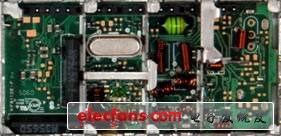Design mainstream TV with next-generation silicon tuner IC
Introduction
Silicon TV tuner ICs are rapidly replacing traditional mixer oscillator phase-locked loop (MOPLL) CAN tuner technology to reduce cost and size and improve performance. Silicon tuner ICs have been in use since 2007 and were heavily used in 2010 due to the surge in sales of flat-panel TVs and set-top boxes. Whether the silicon TV tuner can be widely adopted, the key is whether the designed performance level is comparable to MOPLL, and once the semiconductor supplier meets this performance standard, the obstacles for the accelerated shipment of the silicon TV tuner IC are completely eliminated. Some suppliers currently offer a full range of silicon TV tuner IC products. How to choose a TV tuner IC will be a complicated process, because there are many problems surrounding him. If these technical problems are summarized, it will effectively simplify the TV tuner selection process.
market situation
The demand for the TV market has grown to an astonishing 230 million units/year and is spread across a wide area. The vast TV market can be subdivided into two parts related to TV tuner ICs: the Digital Television All-in-One (iDTV) platform (approximately 160 million units) and analog TV (approximately 0.7 billion units), which are operated by flat-panel TVs and analog-based The composition of the CRT TV.
CRT TV based on analog processing uses old-fashioned image processing technology. In contrast, flat-panel TVs use advanced DSP image processor system-on-a-chip (SoC) from Broadcom, MediaTek, MStar, Novatech, and Sunplus Technology. TV brand manufacturers also have their semiconductor teams to build private SoCs. CRT TVs based on analog processing use microcontrollers with lower processing power, which are not easy to program and configure silicon tuner ICs, and are usually implemented using the old-fashioned MOPLL CAN tuner, requiring more than 150 devices (see Figure 1). The tablet platform features an advanced high-performance processor capable of running a large amount of firmware, making it ideal for configuring advanced digital devices such as silicon TV tuner ICs.


PCB top layer PCB bottom layer
Figure 1: MOPLL CAN tuner requiring more than 150 devices
To meet the needs of consumers, many TVs support both analog and digital transmission standards. Analog transmission standards such as NTSC and PAL/SECAM, where the term "analog" refers to a transmission modulation format, rather than a specific processing technique for decoding. Many countries are implementing a phased off plan in phases, and higher quality digital broadcasting will replace terrestrial analog broadcasting. However, even in countries that have theoretically turned to digital, analog transmissions remain active, and consumers still have the need to support analog transmissions. Japan may be an exception, it achieves a true all-digital conversion, but almost every TV sold in other regions is forced to retain analog reception capabilities to handle low-power analog broadcasts, progressively upgraded cable networks and traditional consumer electronic product. In addition to Japan, mainstream TV brand manufacturers will maintain the demand for analog transmission tuners for at least 5 years or more.
Most television platforms receive content from terrestrial and cable broadcasts. In fact, as long as operators (MSOs) continue to transmit analog content over wired networks, these platforms must support analog transmissions. The cable and terrestrial set-top box market adds 175 million system requirements each year.
IMS's recent forecasting study on silicon tuner ICs (Figure 2) shows the growing demand for TV tuners in TVs, set-top boxes, cable modems, satellite TV receivers and other market segments. These charts illustrate the market opportunities for various applications that are expected to generate approximately 700 million tuner ICs. From the data we can also see that the silicon tuner IC is rapidly spreading, and the growth rate of the silicon tuner IC is more obvious when focusing on the TV and cable set-top box market.

Figure 2: IMS survey shows growing market demand for silicon tuners
Hebei Baisiwei Import&Export Trade Co., LTD. , https://www.baisiweicable.com